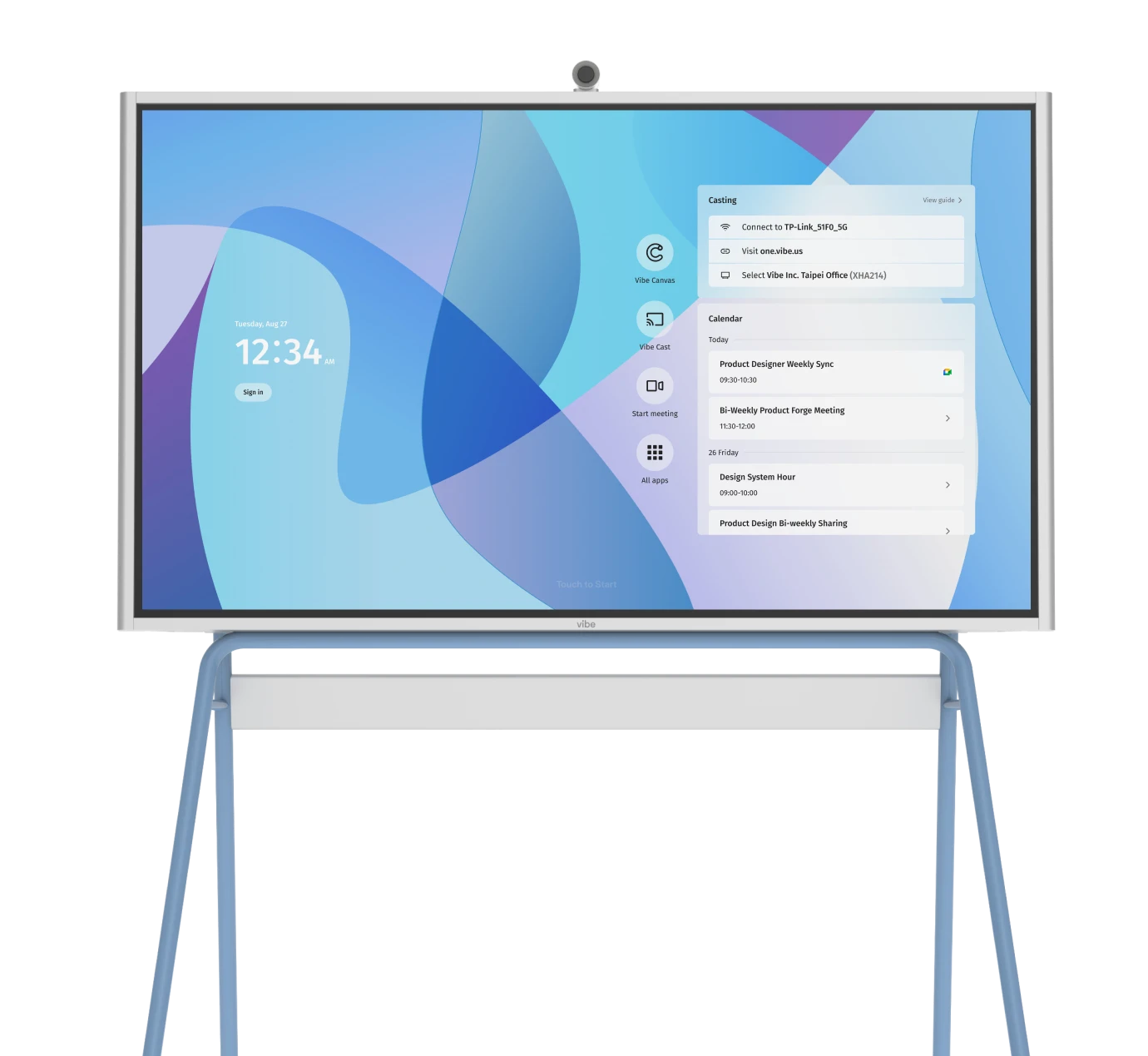Ever had a boss who made every decision without the team’s input and constantly failed to meet expectations? You’re not alone—and there’s a better way. Collaborative decision making is all about bringing teams together to make choices instead of having one person call all the shots. It’s a process where everyone gets to contribute their knowledge, ideas, and perspectives before the group settles on a decision. Think of it as the difference between a team captain making every play call versus the whole team huddling up to figure out the best strategy.
And it works. Inclusive teams make decisions twice as fast, require half as many meetings, and deliver outcomes that are up to 60% better than those made by less inclusive groups. [1]
This approach has become absolutely critical in our current work environment. With so many teams working remotely or in hybrid setups, collaborative decision making helps bridge the gap between different locations and time zones. When teams use the right tools and processes, they can stay connected, organized, and aligned even when they’re not sitting in the same room together.
- Collaborative decision making leads to faster, more confident execution because team members understand the reasoning and are aligned from the start.
- Involving diverse voices surfaces better ideas and encourages creative problem solving that no one person could reach alone.
- Trust and buy-in increase when people feel heard, making teams more resilient and cooperative long after the decision is made.
- Successful collaboration depends on structure—clear roles, shared goals, open communication, and access to the same information.
- The right tools make collaboration possible at scale, especially for remote and hybrid teams that need to stay connected in real time.
Benefits of Collaborative Decision Making
When teams embrace collaborative decision making, the payoff extends far beyond just getting more people involved. The real magic happens in how this approach transforms team dynamics, accelerates results, and creates a ripple effect of positive outcomes that strengthen every aspect of how your team operates. Here’s what research reveals about the advantages of bringing everyone to the decision-making table.
Team Alignment
When everyone participates in a shared decision-making process, the team walks away with a clear understanding of what was decided and what happens next. That shared clarity brings real benefits:
-
No one’s left wondering why a choice was made
-
Everyone knows their role moving forward
-
Confusion drops significantly
-
Projects stay on track
This cuts down on mismatched assumptions. When people help shape a decision, they understand the reasoning and feel more confident carrying it out.
More Input, Better Ideas
Team collaboration opens the door to a wider range of ideas and solutions. When you bring together people with different backgrounds, experiences, and ways of thinking, you’re bound to come up with options that no single person would have considered. It’s like having multiple flashlights illuminating a problem from different angles.
People also feel more engaged when they know their input matters. That can lead to:
-
Higher quality contributions from team members
-
More creative problem-solving approaches
-
Less holding back of good ideas
-
Real opportunities to be heard and make an impact
The simple act of being asked for input can shift how people approach a challenge. Studies on psychological safety—where people feel safe speaking up—show it significantly boosts team learning and performance. [2]
Faster Execution
Here’s something that might surprise you: collaborative decision making often leads to faster implementation, not slower. When team members have been part of the process, they’re ready to hit the ground running once a choice is made. There’s no need to spend time explaining the reasoning or convincing people to get on board.
It also cuts down on the back-and-forth that can happen after decisions are announced. Since everyone already had their say, there’s less second‑guessing and fewer delays caused by concerns that should’ve been raised earlier. Inclusive teams tend to make decisions twice as fast and with half as many meetings compared to those that aren’t. [3]

Stronger Team Trust
Group decision making builds trust in two key ways. First, it shows team members that their opinions and expertise are valued. Second, it creates transparency around how decisions get made, which helps people feel more confident about the process. When people feel heard and respected, they’re more likely to support a decision—even if it’s not the one they would’ve picked. That kind of trust carries over into future projects and makes for stronger teamwork overall.
Why it Matters
Shared decision making helps cut down confusion, surface better ideas, speed up implementation, and strengthen trust. When the whole team is part of the process, the outcomes just work better—for everyone.
The Building Blocks of Collaborative Decision Making
Defined Roles
Even in a collaborative process, someone needs to be responsible for keeping things moving and making sure the decision actually gets made. Teams need clarity about who’s leading the process, who has the final say if consensus can’t be reached, and who’s responsible for implementing the decision.
This doesn’t mean going back to top-down decision making. It just means being clear about roles and responsibilities so that the collaborative process stays focused and productive. When everyone knows their part, the whole process runs more smoothly.
In a typical collaborative decision-making process, key roles often include:
-
Decision facilitator — guides the discussion and keeps the team on track.
-
Final authority — holds the ultimate responsibility for approving or signing off on the decision.
-
Subject matter experts — provide specialized knowledge and insights to inform the decision.
-
Implementation owner — leads the effort to put the decision into action.
Clarifying these roles early helps avoid confusion and keeps the decision process moving efficiently.
Understanding of the Problem
Before setting a goal, teams need to get clear on what they’re actually trying to solve. That means stepping back from the surface-level issue and digging into what’s really going on. Without a solid grasp of the problem and its scope, any decision risks missing the mark.
This includes clarifying what the root issue is—not just the symptoms that appear on the surface—and defining clear boundaries around the problem so the team knows exactly what they’re tackling. Teams also need to understand who’s affected by this issue and what’s truly at stake if it goes unresolved. Finally, it’s crucial to know what solutions have already been attempted and why they didn’t work, preventing the team from repeating past mistakes or overlooking valuable lessons.
Once the problem is fully understood, teams are in a much better position to make smart, targeted decisions.
Clear Goals
Every collaborative decision-making process needs to start with a crystal-clear understanding of what decision needs to be made. This requires more than just stating the obvious problem. Teams need to focus on digging into the underlying issues that created the situation in the first place, while also understanding the constraints involved—whether those are budget limitations, time pressures, or resource availability. Being specific about what success looks like helps teams align on their target outcome, and grasping why this decision matters ensures everyone understands the broader impact and urgency. In addition, teams need to know what happens if they don’t address the issue, as understanding these consequences often clarifies priorities and motivates action.
It’s also important to take time to understand—or at least research—all the potential solutions. A team can’t make a strong decision without first knowing what options exist.
When we say the goal needs to be "clear," we mean it should be something people can act on without confusion or hesitation. A helpful way to define that is through the SMART framework, where a strong goal is:
-
Specific – Focused on a particular decision or outcome
-
Measurable – Tied to something you can track or assess
-
Achievable – Realistic given the time, people, and resources
-
Relevant – Connected to the real problem
-
Time-bound – Constrained to a deadline or timeframe
When everyone understands the stakes involved—and they’re aligned around a goal that checks these boxes—they’re more likely to take the process seriously and bring their best thinking to the table.
Open Communication
The heart of collaborative decision making is honest, open dialogue where people feel safe sharing their real thoughts and concerns. This means creating an environment where disagreement is welcomed as a tool for finding better solutions—not something to be avoided.
Active listening plays a huge role here. It’s not enough for people to wait for their turn to speak. Team members need to really hear what others are saying and build on those ideas. This kind of communication takes intentional effort and often benefits from having someone facilitate the flow of the conversation.
To help make healthy open communication happen, it can be useful to set a few simple structures up front:
-
Establish ground rules about how the team will communicate (e.g., one voice at a time, no interruptions, respect all input).
-
Rotate who speaks first in group discussions to avoid the same people always leading.
-
Assign a devil’s advocate to intentionally challenge ideas and prevent groupthink.
-
Use a facilitator to keep the discussion balanced, focused, and on track.
-
Create space for quiet voices, either through written input or one-on-one follow-ups.

Involving the Right People
Effective collaborative decision making requires involving key stakeholders who will be affected by or responsible for implementing the decision. This doesn’t mean everyone needs to weigh in, but it does mean being thoughtful about who should have a voice.
Different perspectives make collaborative decisions powerful. Teams should actively seek diverse viewpoints from people with varied backgrounds and expertise, while welcoming opinions that challenge conventional thinking—even uncomfortable ones. It’s crucial to look for blind spots that homogeneous groups might miss and include those directly impacted by the decision, as they often have the most valuable insights about implementation challenges.
It’s also important to clarify the roles and responsibilities of those involved. One helpful way to do this is the RACI framework, which defines who is:
-
Responsible for doing the work
-
Accountable for the final decision
-
Consulted for input and expertise
-
Informed about progress and outcomes
Utilizing a framework like RACI helps avoid confusion and ensures everyone knows how they fit into the process.
Shared Information
Productive collaborative decisions require everyone to work from the same set of facts and data. When team members operate with different information, discussions become fragmented and decisions suffer.
The solution is information transparency—ensuring all participants have equal access to the same knowledge base. Start by creating a centralized repository where all relevant documents and data live with real-time updates, so no one works from outdated information. Establish consistent formats for sharing information across projects, making it easier for team members to quickly digest and compare data.
Most importantly, distribute materials before meetings rather than during them. Pre-meeting preparation transforms discussion time from information-sharing sessions into actual decision-making conversations. For complex data, use visualization tools and infographics that make key insights immediately clear to everyone, regardless of their technical background.
This foundation of shared information keeps teams aligned, eliminates confusion, and creates the conditions for stronger collaborative decisions.
Types of Collaborative Decision Making
Not all collaborative decisions require the same approach. The method you choose depends on factors like team size, the complexity of the decision, how much time you have, and whether sensitive topics are involved. Some situations call for rapid-fire creativity, while others need structured analysis or anonymous input to get the best results. Understanding these different approaches helps you match the right technique to your specific challenges:
1. Brainstorming
Brainstorming is probably the most familiar form of collaborative decision making. The idea is simple: get the team together and encourage everyone to share ideas freely without worrying about whether they’re practical or perfect. The goal is to generate as many options as possible before evaluating any of them. This approach works best when teams can resist the urge to judge ideas too quickly. Sometimes the most creative solutions come from building on ideas that initially seem unrealistic. The key is to keep the idea-generation phase separate from the evaluation phase.
When to use: Ideal for small to medium teams (5–12 people) looking to generate creative ideas quickly, like a marketing team planning a new campaign. Sessions usually last 30 minutes to an hour.
Watch out for: Judging ideas too soon can limit creativity. Make sure everyone understands that evaluation happens later.
2. The Delphi Method
The Delphi method takes a different approach by having team members provide input privately rather than in a group setting. Each person shares their thoughts independently, and then the facilitator compiles and shares the feedback with the group. This process continues through multiple rounds until the team reaches consensus. This method is particularly useful when dealing with sensitive topics or when there are strong personalities who might dominate a group discussion. It helps reduce the pressure that people can feel to conform to the group’s thinking and allows for more honest input.
When to use: Best for medium to large groups (8+ people), especially if anonymity or remote participation is important, such as collecting expert opinions on a company merger. This process can take days or weeks because of multiple rounds.
Watch out for: The process can drag on. Keep rounds focused and set clear deadlines.
3. Nominal Group Technique
The nominal group technique combines individual thinking with group discussion. Team members start by writing down their ideas privately, then share them with the group. Once all ideas are on the table, the team discusses and ranks them together to identify the best options. This approach makes sure that every voice is heard equally, including those from people who might not speak up as readily in open discussions. It also helps prevent groupthink by ensuring that individual creativity happens before group influence kicks in.
When to use: Good for small to medium teams (5–10 people) that want to balance participation, such as a product team ranking features for a release. Sessions typically last 1 to 2 hours.
Watch out for: Strong voices can still dominate if not managed. A neutral facilitator helps keep balance.
4. Weighted Scoring
Weighted scoring brings a more analytical approach to collaborative decision making. The team starts by agreeing on the criteria that matter most for the decision. Then they assign weights to show how important each criterion is, and score each option against these criteria. This method works well for complex decisions where multiple factors need to be considered. It helps teams move beyond gut feelings and personal preferences to make choices based on objective analysis.
When to use: Best for small to medium teams (4–8 people) facing complex decisions, like selecting a vendor based on cost, delivery, and support. Sessions can take 1 to 3 hours, depending on complexity.
Watch out for: Avoid overcomplicating the scoring system or allowing bias in weights. Keep criteria clear and openly discuss weights.
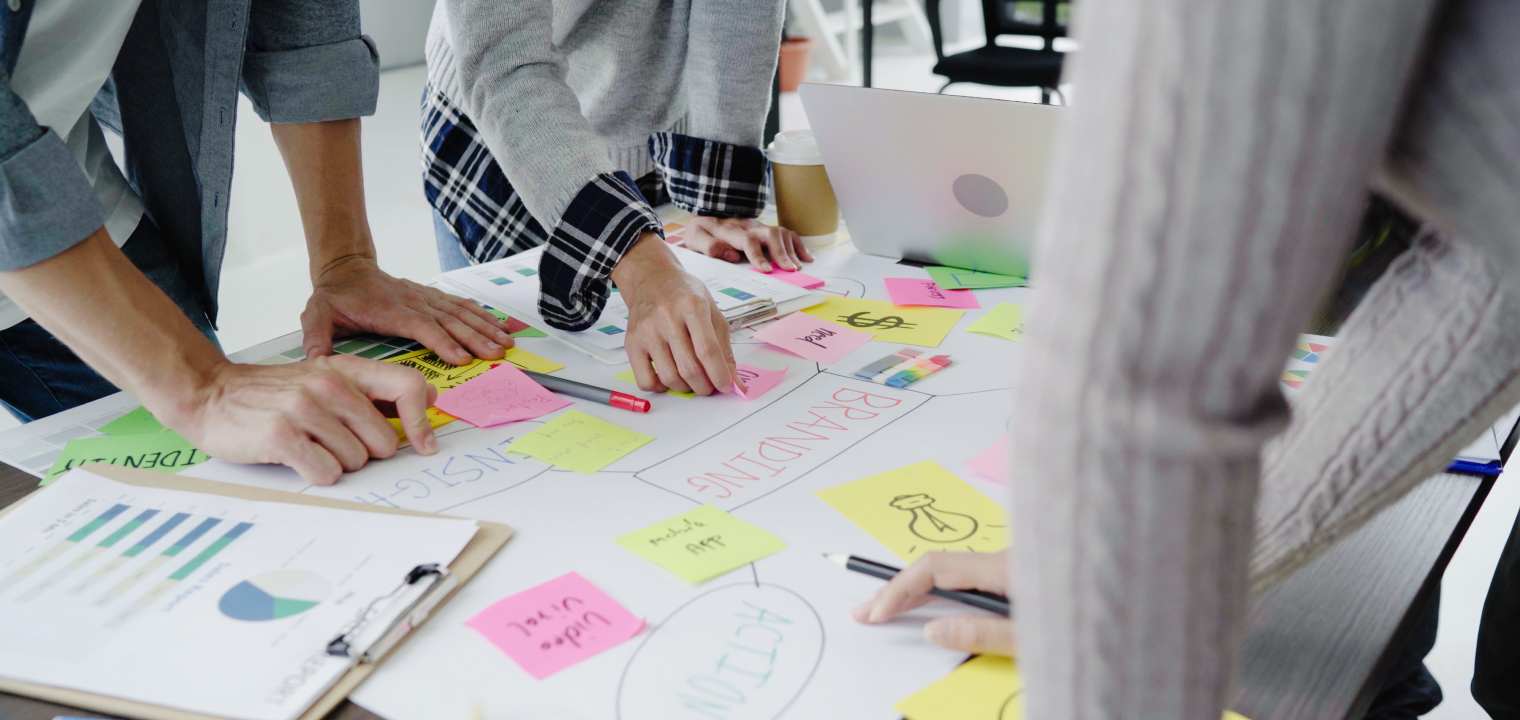
Facilitate Collaborative Decision Making with Vibe Board S1
Effective collaborative decision making depends on clear communication, shared understanding, and tools that support how teams actually work—especially when members are spread across locations and time zones. Without the right avenues and technology, collaboration can slow down, and ideas can get lost.
Vibe Board S1 enables collaborative decision making by eliminating the barriers that typically slow teams down. Its infinite digital canvas allows multiple team members to contribute ideas simultaneously—whether they’re sketching concepts, adding sticky notes, or building decision matrices in real time. The board’s intuitive touch interface feels as natural as pen on paper, removing the technical friction that often hampers digital collaboration.
What sets Vibe apart is how it bridges the hybrid work divide during critical decision-making moments. AI-driven camera framing automatically keeps remote participants visually engaged with the content, while omnidirectional microphones ensure every voice in the room is heard clearly by virtual attendees. The board seamlessly integrates with over 250 apps teams already use—from Slack for instant feedback to project management tools for immediate task assignment—creating a unified decision-making hub. By capturing, organizing, and instantly syncing all collaborative input across devices, Vibe Board helps teams move from scattered ideas to clear decisions faster, ensuring nothing gets lost in translation and every stakeholder stays aligned throughout the process.
If you want your team to collaborate more effectively and make decisions with confidence, seeing Vibe Board in action is the next step. Request a demo to experience how real-time collaboration can elevate your team’s decision-making process—no matter where everyone is working from.
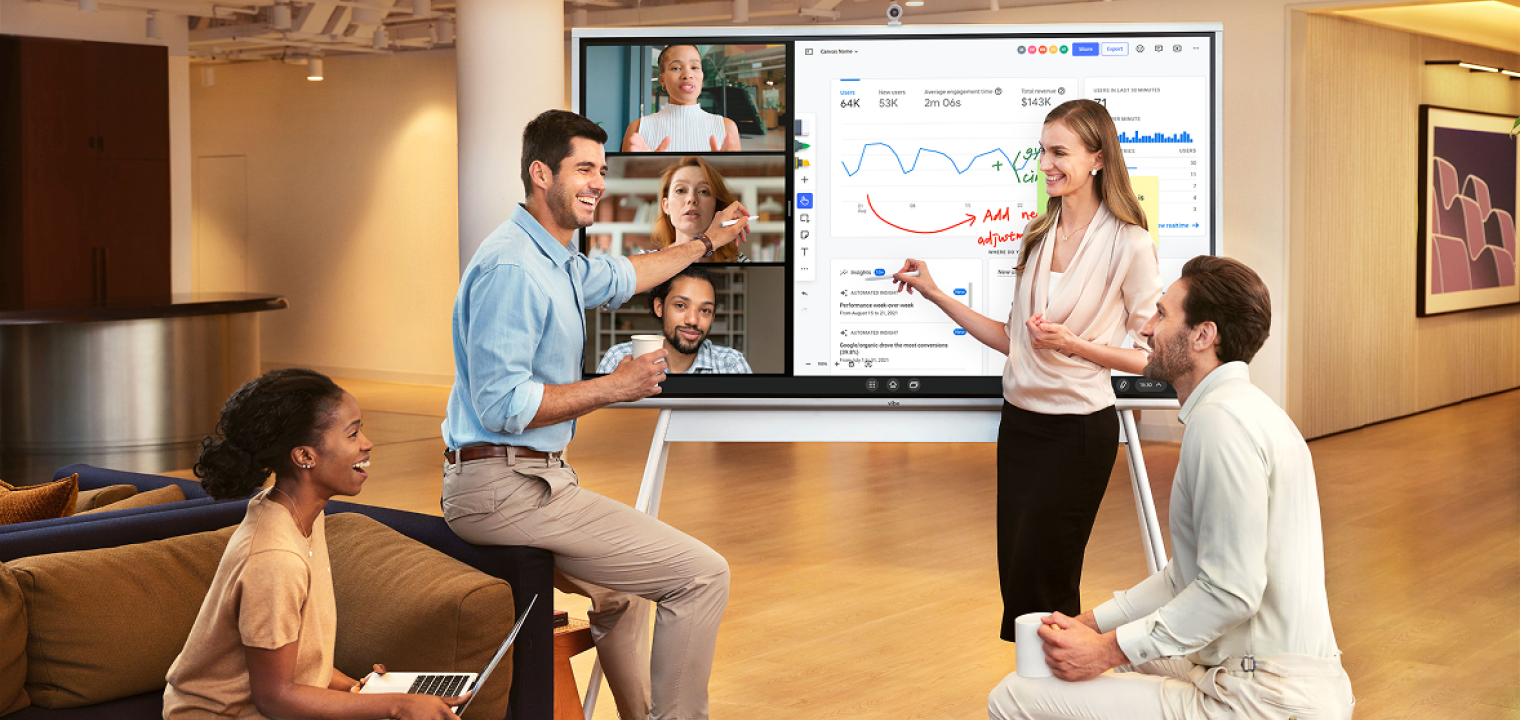 Team using the Vibe Board for collaborative decision-making and real-time input during a meeting.
Team using the Vibe Board for collaborative decision-making and real-time input during a meeting.FAQs
When should a person use decision-making?
Teams should use collaborative decision making when decisions impact multiple team members, for complex problems that need diverse input, and to build alignment and shared ownership. It’s particularly valuable when you need buy-in from everyone who will be involved in implementing the decision.
What are the key elements of collaborative decision making?
The key elements include clear goals and roles, open and honest communication, and shared access to information. Teams also need defined processes for how decisions get made and who has final authority when consensus can’t be reached.
How does collaborative decision making work in business settings?
In business settings, teams share ideas and review options together through structured discussions or brainstorming sessions. Input is discussed openly, then a decision is made using the chosen method. Finally, everyone aligns on next steps and responsibilities for implementation.
What are the main benefits of collaborative decision making?
The main benefits include more creative and thoughtful outcomes, faster follow-through on decisions, and stronger team trust. Teams also experience better alignment and reduced confusion about roles and responsibilities.
How can tools like Vibe Board improve collaborative decision making?
Tools like Vibe Board keep ideas and input visible to everyone on the team, support real-time collaboration from anywhere, and help teams move from discussion to decision quickly. The visual nature of the platform makes it easier to organize thoughts and see connections between different ideas.




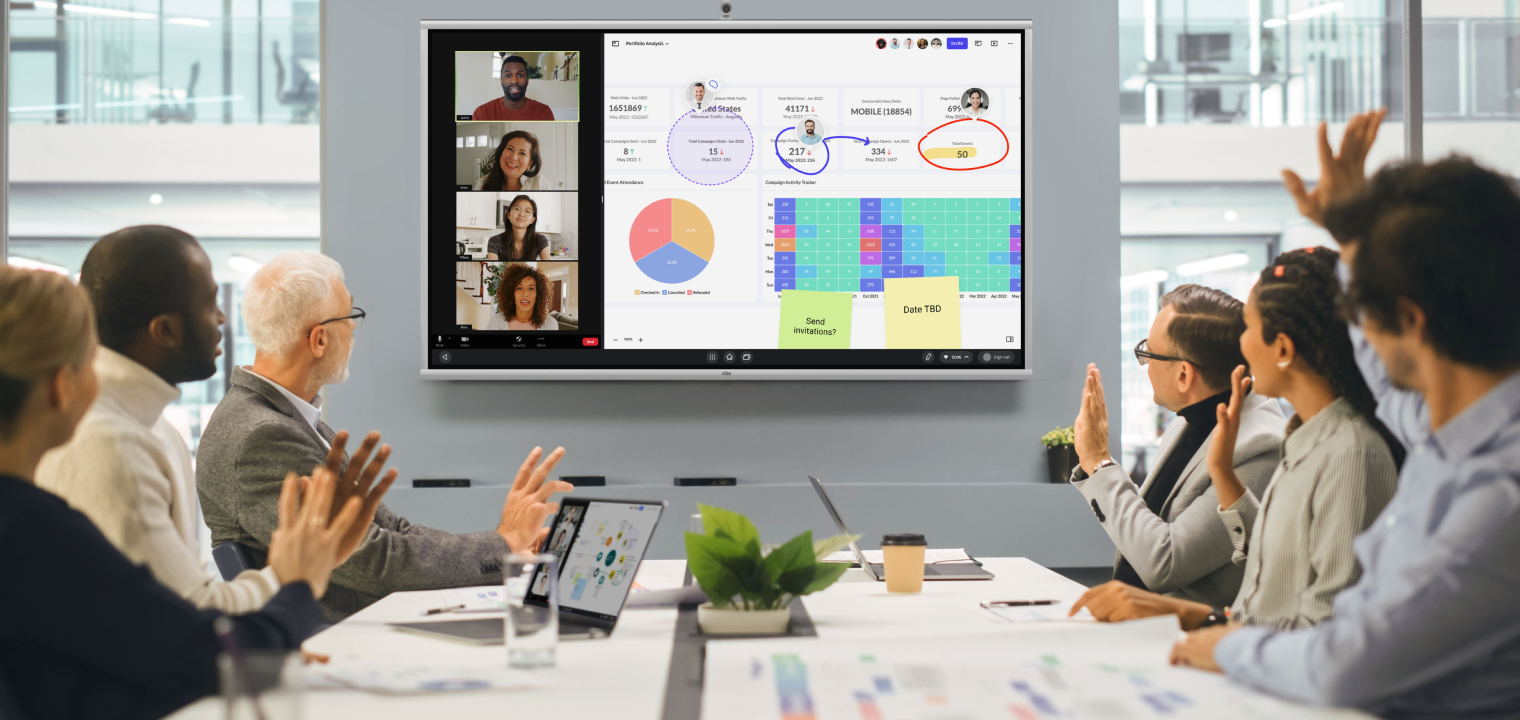

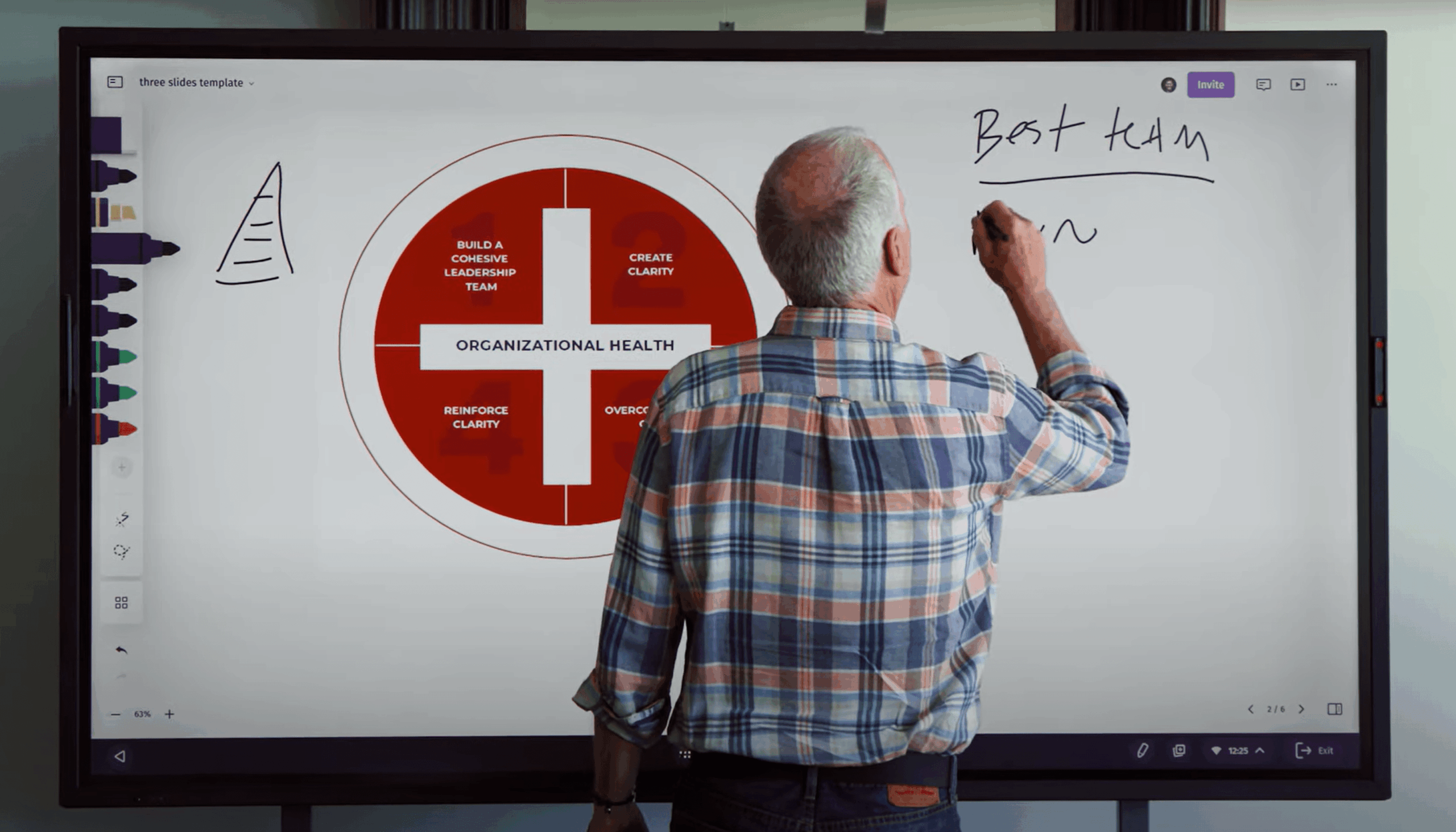


-1sbltxxq4FYxHrXrwJVLsCDNsXpqNa.webp)
-5Zp0pmSytvcuYDVs1LvuwplKuRneK0.webp)
